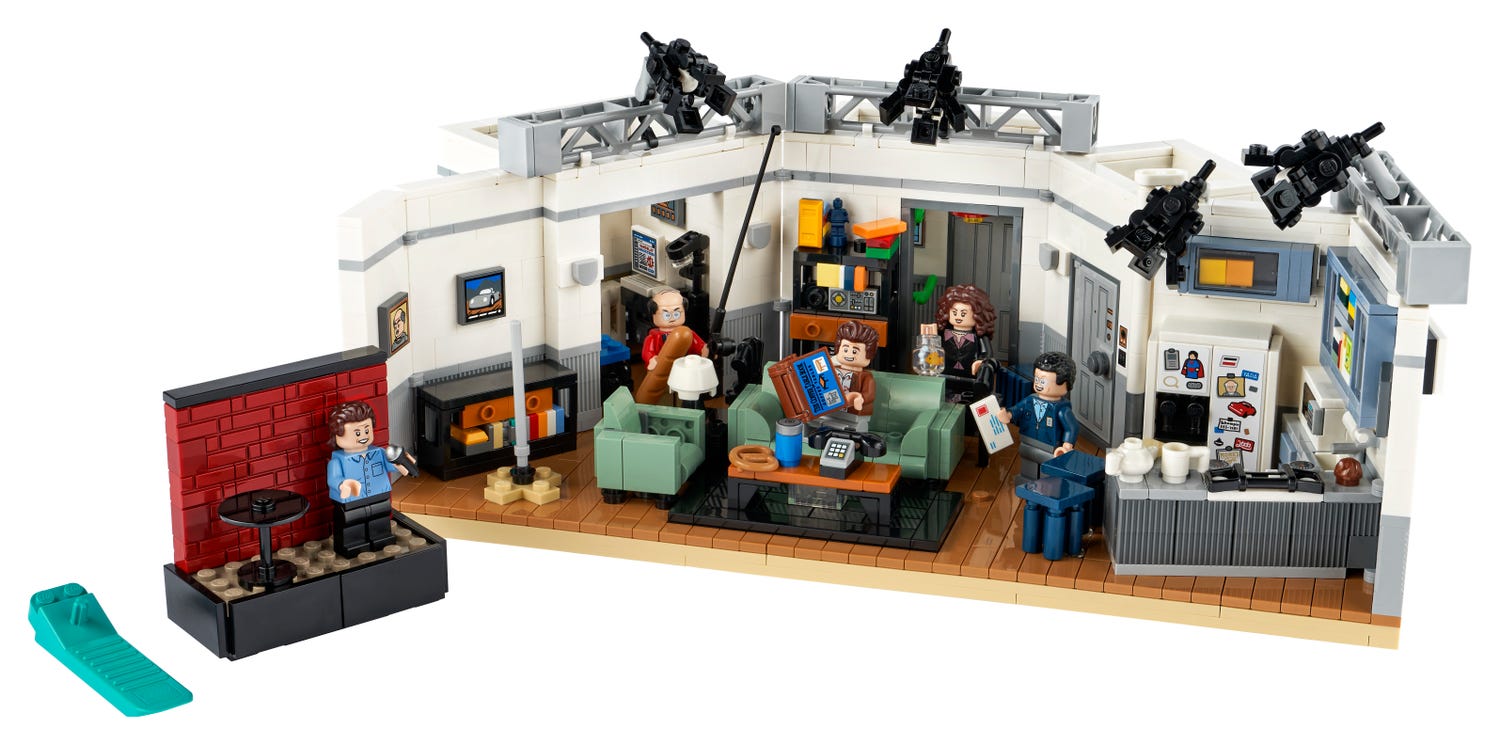
When you’re syndicating content for different outlets, in different formats, and with a variety of people involved in different parts of content production, spreadsheets and traditional editorial calendars aren’t quite cutting it. As enterprises expand their content initiatives, they require a one-stop solution that’s collaborative, centralizing, and flexible. A headless CMS is the answer to creating editorial dynamic content calendars that ease editorial teams’ planning efforts, improve transparency, and flexibility for constantly shifting digital landscapes. With content that is structured, segmentation opportunities, and API functionality, it’s easier for content teams to build and maintain the calendar for their dissemination and campaigns.
Table of Contents
Structuring Content for Predictable Publishing Cycles
Flexible scheduling is based on a successful content model. Since headless means that all teams can create the necessary fields and parameters to best facilitate a publishing workflow content type, author, status, category, and publish date it’s easier for all teams to determine the date and time something will be published. Content can be stored regardless of how or where it will be rendered. Therefore, teams have total access and control over when something goes live since a rendering template or framework does not constrain them.
When content is mapped this way, the CMS becomes the system of record for all content realities. Editorial teams can create assets today that won’t publish for weeks or months, providing a publish date and subsequently, utilizing associated content to map assets to integrated campaigns, channels, and geo-specific regions. The ability to filter and sort within custom dashboards based on structured data fields also empowers editors to see what’s coming up by topic, owner, or publish date in an overview. Headless CMS vs WordPress becomes especially relevant here, as headless options offer far greater flexibility for scheduling, structuring, and managing large-scale, multi-channel content than traditional WordPress setups.
Visualizing Workflows with Custom Interfaces and Dashboards
A headless CMS does not come with a front end, but it has the ability to create customizable interfaces and dashboards that cater to editorial and marketing operations. Whether through integration with third-party visualization tools or internal tools developed in a framework like React or Vue, dynamic calendar views render possible while pulling from the CMS via API in real-time.
These calendar views can indicate what content is actively being created, who is authoring it, if it’s completed, when it’s due, and for what campaigns rendered in a familiar calendar grid that displays all content in the publishing pipeline. Thus, teams see where there are gaps in scheduling, where content may be stuck in the publishing pipeline, or where there are duplicate efforts. Since this is all real-time information, the calendar also reflects publish dates and new assignments as they’re updated in the CMS. Ultimately, this fosters collaboration between teams and eliminates the miscommunication that occurs when stakeholders share completed tools relying on static information.
Enhancing Collaboration Across Distributed Teams
Collaboration is challenging in today’s content teams, which are often dispersed across countries and departments. A headless CMS supports this necessity with role-based permissions, editorial workflows, and activity logs that ensure everyone understands the same information. With a CMS at the center of a content calendar and additional applications integrated, writers, editors, designers, and developers can understand what’s in the pipeline and support an open and transparent collaborative endeavor from the onset.
For example, editors can delegate parts of projects or indicate which aspects require review; those contributors can add comments, upload drafts, or suggest revisions all on the same content object. In addition, because the CMS is a decoupled application, developers can build APIs that connect the headless CMS to communication tools like Slack or Microsoft Teams or project management applications like Trello or Asana. As a result, the headless CMS can generate automated messages or pings in other environments to denote finished, published, approved, or due content, ensuring that dispersed teams remain on the same page without utilizing disparate tools.
Automating Publication with Scheduled Content Deployment
Another major component of a content calendar is the ability to publish on time and on schedule. A Headless CMS enhances this feature with optimized scheduled publishing across multiple channels or outlets, thanks to its API accessibility. When content is meant to go live at a certain date, the CMS can publish the content to all front ends: website, mobile app, email distribution, or any additional third-party integrations on the date and time requested.
This means that teams do not have to worry about manually publishing across different channels and inadvertently forgetting one (or more) which is always a frustrating, avoidable exercise that holds up projects unnecessarily. When brands are global with international teams, the timeline can be sensitive to people in different time zones but with published scheduling capabilities, all content can go live simultaneously, at the same time, everywhere in the world. This holds true for product releases, episodic blogs, and campaign releases scheduling publishing is valuable when consistency and dependability are necessary.
Scaling Content Calendars for Enterprise and Multi-Team Use
As businesses reach enterprise levels with increasingly complicated offerings, increasingly complicated content operations emerge. Businesses may have multiple brands, regionally oriented marketing initiatives, foreign language input for their products, or simultaneous campaigns with overlapping themes. For teams operating in dedicated CMS or churning out calendars and spreadsheets, the urgency to silo becomes excessive. Yet a headless CMS offers the enterprise-level social infrastructure required to undertake such activities with structured, modular content models, specific permission settings, and vastly customizable workflows.
For instance, every function or team product marketing versus brand marketing versus regional focus versus customer education has a dedicated space within the headless CMS for its own functionality. It can have a separate pipeline, assets, and deliverable dates while still being able to contribute to an overarching content calendar available to management and stakeholders. Therefore, activities can happen in parallel without content overlap or scheduling delays.
For example, the North American product team can schedule feature launches on the same system that an EMEA marketing team uses to execute a geo-targeted promotion; they can manage content calendars across the board and ensure no brand dissonance or operational lag occurs. With role-based permissions, each contributor only sees and edits what’s pertinent to their work; however, C-suite executives have access to group views of the contributor hierarchy and a global editorial calendar.
In addition, enterprise companies can add localization efforts and legal review deadlines and campaign-level tagging to account for the nuances of publishing content internationally. With extensive integrations to other project management and analytical platforms, this is more than a calendar; it becomes a live content operations center for the enterprise. The appreciation of scalability advantages not only provides the opportunity for content to be created on a more massive scale but also the alignment, transparency, and planning for enterprise-level businesses with many moving parts.
Customizing Views for Different Stakeholders
One of the greatest benefits of having a headless CMS to support content calendars is the ability to build visualizations and interfaces depending on the stakeholder group needs. Content operations are not uniform. Where marketing needs to understand launch dates and campaign phases, content producers need to understand due dates and draft statuses, developers need to know when assets have been passed along for development, and executives need only a high-level view of status and results.
With a headless CMS, companies can use APIs to build calendar dashboards or interfaces geared toward each audience in the CMS back end or in a separate tool integrated via API. Each view can hide/show metadata fields of importance published/unpublished, review notes, localization, tags tied to campaigns, tags tied to readiness. A few views that might be appropriate include that of a designer who needs to see due items for creative assets coming up, versus a legal reviewer, who may only need to see items needing compliance review.
Custom views not only foster better usability but also reduce cognitive load. No longer do they need to scroll past irrelevant items or have to access a second or third platform to get up to speed; they have it all at their fingertips, in real-time, to make decisions and execute actions more promptly. Whether it’s a filter, color coding, notifications, or even roll-up KPIs, the content calendar is as much a strategic dashboard as it is a scheduling calendar.
Ultimately, customizing calendar views for each stakeholder allows for a more collaborative, transparent, and successful editorial process. The chance of miscommunication is lowered, feedback is obtained more quickly, and everyone regardless of department, location, or responsibility is kept on the same page, literally and figuratively, for the why, when, and how of content delivery.
Integrating Analytics and Performance Feedback
A content calendar should not only include what has been published and what is scheduled for the future, but also projects into the future based on what has already been performed. A headless CMS integrates with analytics and attribution platforms Google Analytics, Adobe Analytics, or even custom internal data tracking solutions and pulls in all relevant key performance indicators for each relevant piece of content. Such data merges with the calendar view so that teams not only see when something was published, but also engagement, traffic, conversions, etc., relative to publish date and time.
This becomes a cumulative project over time and allows editorial teams to determine what types of content do well, if certain types of days are better for publishing certain pieces, etc. Decisions can be made mid-campaign for adjustments and for scheduling more informed content in the future based on how people interact and when. A content calendar with this sort of data becomes much easier to work from.
Supporting Multichannel and Multilingual Publishing
However, for enterprises that apply content across regions and channels, an added complexity is the ability to execute multilingual, multichannel launches simultaneously. A headless CMS can make this happen as enterprises can create and manage content iterations for different geo-markets and languages without having to operate out of the box. Editors can timestamp the go-live date for the campaign’s language-driven iterations; simultaneously, developers can manipulate the front end to ensure access to these versions via API, depending on user preferences or geo-location.
None of this seamlessness would be possible via traditional CMS integrations or separate project management solutions. Again, headless CMS integrations allow enterprises to maintain all versions and link them under one calendar, and with global compliance in mind, compliant language can be consistently deployed across regulated geo-markets and region rollout across digital touchpoints.
Adapting to Last-Minute Changes with Greater Agility
The beauty is that not everything goes according to a content plan. Deadlines are extended, new items emerge, and different content takes priority. A more malleable content calendar as included with a headless CMS allows teams to adjust on the fly without disrupting the entire process. That’s because hard-coded, template-driven content isn’t locked into one specific publishing channel; for instance, editors can retime, substitute, or adjust universally with minimal hassle.
If a publish date is extended or a piece in draft status needs to be swapped out, it merely needs to be done in the CMS; every other connected engine recognizes the alteration and either adjusts to the new course of action or swaps out the submission, reducing disappointment and redundancy. This is essential for companies operating in high-stakes, fast-paced environments such as media, tech, and e-commerce.
Conclusion
A content calendar becomes a living, breathing entity with collaboration and automation. A content calendar is a content strategy, something constantly on the move, something with a new workflow. Using a headless CMS’s structured, flexible, and API-first approach, the editorial calendar becomes more than a checklist; it becomes an interconnected project that encourages collaboration, ongoing work, and easy access to historical information.
From organization to timestamping, scheduling to publishing, and performance review, everything can be better managed when using a headless CMS. With demand ever-increasing for more content across more platforms and more niches, integrating such strategies will have you on time, on task, and ready to roll at all times.
RELATED ARTICLES
Latest Articles
 Florida’s Harsh Sun & Your Car: How to Prevent Paint Damage with PPFIn AutomotiveMarch 27, 2025Florida is known for its year-round sunshine, but that […]
Florida’s Harsh Sun & Your Car: How to Prevent Paint Damage with PPFIn AutomotiveMarch 27, 2025Florida is known for its year-round sunshine, but that […] 5 Cool Apps You Probably Didn’t Know AboutIn AppMarch 19, 2025We’ve all heard of mainstream apps such as Facebook, […]
5 Cool Apps You Probably Didn’t Know AboutIn AppMarch 19, 2025We’ve all heard of mainstream apps such as Facebook, […] Top 5 Most Downloaded Apps in the App Store in 2024In TipsMarch 13, 2025The App Store continues to be a hotspot for new and […]
Top 5 Most Downloaded Apps in the App Store in 2024In TipsMarch 13, 2025The App Store continues to be a hotspot for new and […] Top 5 Digital PR and Link-Building Agencies in 2025 for SEO GrowthIn TechnologyMarch 10, 2025In 2025, digital PR and quality backlinks will be […]
Top 5 Digital PR and Link-Building Agencies in 2025 for SEO GrowthIn TechnologyMarch 10, 2025In 2025, digital PR and quality backlinks will be […] How Long To Soak Chia Seeds: A Simple GuideIn TipsFebruary 11, 2025Chia seeds are little round black seeds that have […]
How Long To Soak Chia Seeds: A Simple GuideIn TipsFebruary 11, 2025Chia seeds are little round black seeds that have […] How to Spot Fake Software Licenses and Avoid ScamsIn TechnologyFebruary 4, 2025Image Credit: pexels.com In today’s complex […]
How to Spot Fake Software Licenses and Avoid ScamsIn TechnologyFebruary 4, 2025Image Credit: pexels.com In today’s complex […] What Factors Should Businesses Consider When Choosing A SIP Trunk Provider?In TechnologyFebruary 1, 2025Under the conditions that are related to running a […]
What Factors Should Businesses Consider When Choosing A SIP Trunk Provider?In TechnologyFebruary 1, 2025Under the conditions that are related to running a […] Best ATV Rentals in Dubai for Unforgettable Desert SafarisIn TravelJanuary 29, 2025Image Credit: pexels.com Dubai is a city that offers […]
Best ATV Rentals in Dubai for Unforgettable Desert SafarisIn TravelJanuary 29, 2025Image Credit: pexels.com Dubai is a city that offers […] The Evolution of Paint Protection Film: Innovations You Need to KnowIn TechnologyJanuary 26, 2025Over the years, Paint Protection Film (PPF) has […]
The Evolution of Paint Protection Film: Innovations You Need to KnowIn TechnologyJanuary 26, 2025Over the years, Paint Protection Film (PPF) has […] Your Ultimate Guide to Local SEOIn MarketingJanuary 17, 2025Local SEO can be defined as optimization of the online […]
Your Ultimate Guide to Local SEOIn MarketingJanuary 17, 2025Local SEO can be defined as optimization of the online […] Top 5 Reasons Why the Organic Traffic Is Really Beneficial for BusinessesIn MarketingJanuary 16, 2025Many companies invest heavily in SEO, with the […]
Top 5 Reasons Why the Organic Traffic Is Really Beneficial for BusinessesIn MarketingJanuary 16, 2025Many companies invest heavily in SEO, with the […] Understanding the Power of Spreadsheet Software for Personal and Business UseIn TechnologyDecember 7, 2024In today’s data-driven world, spreadsheet […]
Understanding the Power of Spreadsheet Software for Personal and Business UseIn TechnologyDecember 7, 2024In today’s data-driven world, spreadsheet […]
stopie.com is a participant in the Amazon Services LLC Associates Program, an affiliate advertising program designed to provide a means for sites to earn advertising fees by advertising and linking to Amazon.com.
Clicking on an Amazon link from stopie.com does not increase the cost of any item you purchase.
We will only ever link to Amazon products that we think our visitors may be interested in and appreciate learning more about.



